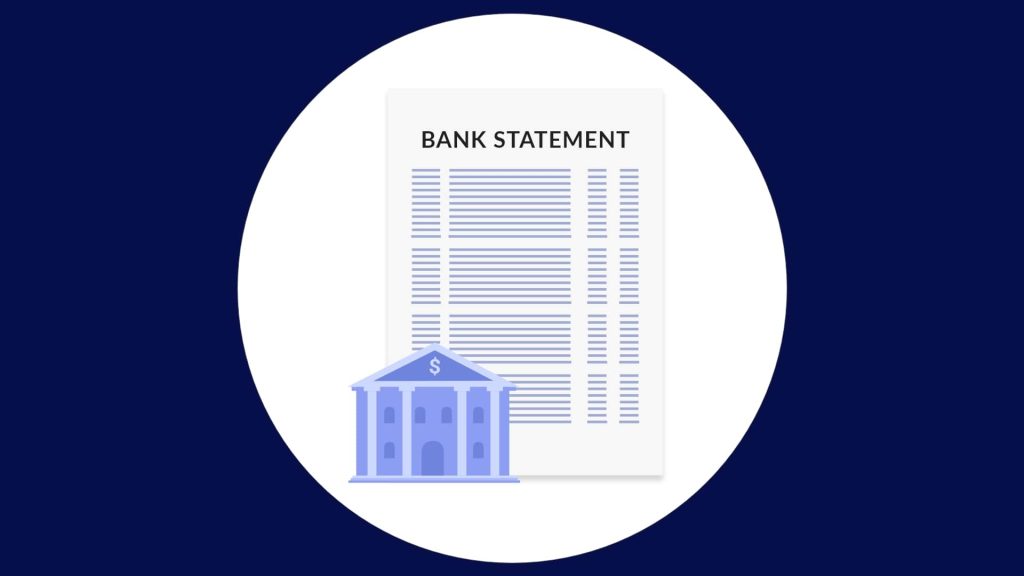
When opening a bank account for a business, it is much more important to monitor your bank account regularly compared to your personal account. Your statement contains important data about your business expenses, deposits from customers and any account maintenance fees charged by the bank, especially for business account holders. Reading statements can also help balance your company’s checkbook.
Bank statements serve as a snapshot of financial activity. These valuable financial tools can be obtained by mail, e-mail or through an online bank account. If you have a checking or savings account, you will likely receive a monthly bank statement from a financial institution.
What is a bank statement?
A bank statement is usually a document (also called an account statement) that the bank sends to the account holder each month, summarizing all account transactions for the month. Bank statements contain information about the bank account, such as account numbers and a list of details for deposits and withdrawals.
How bank statements work.
The bank gives the account holder a bank statement detailing account activity. The account holder can view all transactions processed in the account. Banks usually send monthly statements to account holders on a specified date. In addition, the transactions in the statements are usually displayed in chronological order.
How to get bank statements
Bank statements are usually sent as files to the account holder’s address. However, many financial institutions recommend that customers not use paper to obtain electronic statements.
You can usually access your account through your bank’s website or mobile app to view your electronic statements.
Why are bank statements important?
Checking your bank statements regularly can help you keep track of your spending habits. Use it along with your credit card statement to fully understand your financial situation. And this information can help you adjust your spending to your financial goals and streamline your budget.
It can also help you keep track of whether there are any fraudulent or unauthorized claims on your account by reviewing your financial activity. If something seems wrong, you can compare account activity and balances with your personal records and work with your banks to correct the errors.
Bank statements can also be useful anytime you need to provide proof of income, such as when applying for a mortgage or personal loan.
What does your bank statement look like?
Bank statements contain a wealth of information for account holders. What shows up on your statement depends on the financial institution, but you can usually see the following:
- Your personal information.
- Financial institution information.
- This is the date of the period of validity of the document.
- Balance history
- Transaction history.
- The fees to be charged.
- Interest income.
Here is some personal information you may find on your bank statement.
- Name.
- Home Office.
- This is your bank account number.
- This is the period of validity of the document.
- The beginning and ending balances.
Bank statements contain information about different types of transactions, including:
- Check your deposit
- Direct deposit.
- This is a wire transfer.
- Canceled check.
- I make up for it.
- Credits.
- Purchase and payment by debit card.
- ATM withdrawals.
- Payment account.
- Bank charges.
- Interest income.
How to read bank statements
To read a bank statement correctly and efficiently, you must clearly understand every detail the bank statement says.
Door Loop.
The first and most important thing the bank should pay attention to is the “period” or “End of Statement” date, which represents the range of dates included on the bank statement.
Bank statements are generated regularly and are not updated with new bank account information.
Your Information.
Your name, bank account number (only the last four digits of your account number are displayed for security reasons), and your current mailing address are also displayed on your bank statement.
Bank Information.
Bank statements should be easily searchable and clearly contain information about banks or transactions.
This information includes the bank name, phone number, website, and other important information about when and how to contact us.
Account activity.
You can also view a detailed history of all bank transactions that have occurred through your account.
All cash from your bank account, such as payments, withdrawals, and purchases you’ve approved, will be marked as “Withdrawals” or “Borrowings.
Account Summary.
On your bank statement, you can see an account summary, which provides a “snapshot” of your bank account. This summary is displayed at the top of your transaction list. You will see the beginning balance, total deposits and withdrawals, and finally the ending account balance.
It is important to keep in mind that the output account balance shown is the balance that was correct on the end date of the billing cycle.
Trade Date.
Some purchases, such as bulk payments and credit card transactions, may not have been accounted for on the day of purchase, so some transactions on bank statements may reflect slight delays (1 or 2 days).
Feces and defecation.
A loan is money that goes into your bank account, while a borrowing is money that goes out of your bank account.
This includes check deposits made at bank branches, ATMs, or online, and wages deposited directly into bank accounts by employers.



GIPHY App Key not set. Please check settings